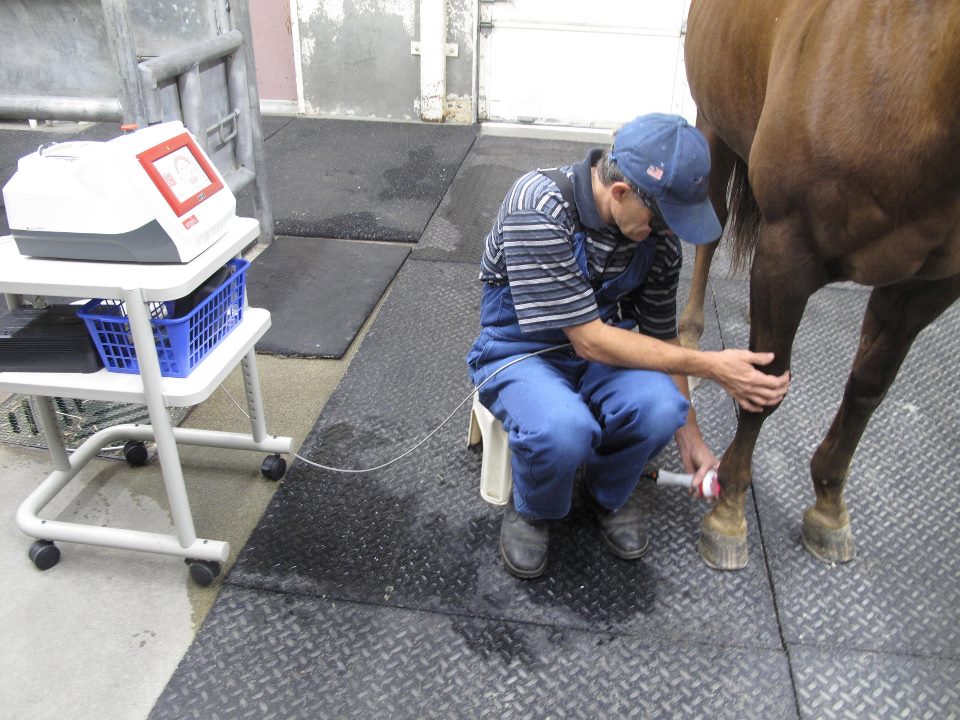Equine Therapy for Children: Psychological and Behavioral Assistance Clarified
Equine Therapy for Children: Psychological and Behavioral Assistance Clarified
Blog Article
Laser Therapy in Equine Treatment: A Modern Approach to Improving Steed Wellness
Laser treatment has arised as a crucial strategy in equine therapy, using concentrated light power to cultivate cellular repair and speed up recuperation from a variety of ailments. This non-invasive approach is especially reliable in taking care of bone and joint injuries, injuries, and inflammatory problems, significantly boosting general horse wellness. By stimulating mitochondrial activity and improving ATP manufacturing, laser therapy not just enhances circulation yet also offers significant pain alleviation. As this ingenious treatment remains to get traction, it opens up intriguing possibilities for addressing chronic problems like joint inflammation and hoof issues, signifying a transformative shift in veterinary care. What makes this modality particularly compelling?
Understanding Laser Therapy
Laser treatment, a non-invasive treatment modality, has gained significant grip in equine medication due to its efficiency in promoting recovery and discomfort relief. This advanced healing strategy makes use of focused light energy to pass through cells, fostering cellular fixing and regrowth. The underlying device entails the stimulation of mobile mitochondria, leading to enhanced manufacturing of adenosine triphosphate (ATP), the energy currency of cells. Improved ATP levels quicken tissue repair procedures and decrease swelling, making laser therapy specifically efficient for dealing with musculoskeletal injuries, injuries, and other inflammatory problems in steeds.
There are a number of kinds of lasers made use of in equine treatment, each with certain wavelengths and power outcomes tailored to various therapeutic requirements. Low-level laser therapy (LLLT), additionally called chilly laser treatment, employs lower power degrees to stimulate cell feature without creating thermal damages. High-intensity laser therapy (HILT), in contrast, makes use of greater power levels to accomplish much deeper cells penetration and even more significant therapeutic impacts.
Veterinarians make use of different laser tools and methods relying on the problem being treated and the desired deepness of tissue infiltration. Correct training and experience are essential for guaranteeing the risk-free and effective application of laser treatment, therefore maximizing its therapeutic potential while minimizing risks.
Advantages for Equine Health
With a solid understanding of how laser treatment works, it is very important to discover its various benefits for equine wellness. Among the key benefits is its capability to increase tissue fixing and cell development. By boosting cellular feature, laser treatment promotes faster wound recovery and aids in the regeneration of broken cells. This can be specifically valuable in lowering recovery times for steeds struggling with injuries.
In addition, laser therapy has actually been shown to improve flow, therefore enhancing blood flow to affected areas. Enhanced blood circulation ensures that important nutrients and oxygen are supplied a lot more successfully, helping with the healing procedure. Additionally, laser therapy's anti-inflammatory results help in minimizing go swelling and discomfort, which is essential for the overall well-being of the horse.
Pain monitoring straight from the source is one more substantial advantage. By releasing endorphins and obstructing discomfort signals, laser therapy supplies effective, non-invasive alleviation from both acute and persistent pain. This can add to enhanced flexibility and lifestyle for the pet.
Lastly, laser treatment is a non-invasive therapy choice, lessening the threat of difficulties connected with more invasive treatments. Its versatility and effectiveness make it an important device in modern equine veterinary medicine.
Typical Problems Dealt With

Another prevalent condition treated with laser therapy is arthritis. Additionally, laser therapy is employed in the management of injuries.
Horse breathing problems, such as persistent airway obstruction (RAO), additionally respond positively to laser treatment. Laser therapy is beneficial in treating unguis issues, consisting of laminitis and abscesses.
Treatment and Safety
Executing laser treatment in equine treatment includes a thorough treatment to make sure both effectiveness and safety. Equine Therapy. The procedure starts with an extensive vet assessment to identify the suitability of laser treatment for the horse's particular condition. When regarded appropriate, the treatment location is prepared by cleansing and, if required, clipping the hair to improve laser infiltration
The professional has to select the right sort of laser, typically a low-level laser (LLLT) or a high-power laser (HPL), depending on the condition being treated. The laser tool is after that calibrated to the suitable wavelength, power, and period setups. During the application, the specialist moves the laser over the targeted area in an organized way, making certain constant and weblink also direct exposure.
Security methods are purely followed, including the usage of protective eyewear for both the professional and the horse. In addition, it is crucial to keep an eye on the equine for any type of indicators of pain or adverse reactions throughout the procedure. Post-treatment, the horse is typically offered a duration of rest to permit the healing impacts to manifest.

Future of Equine Laser Therapy
As innovations in veterinary medicine continue to unfold, the future of equine laser treatment holds considerable promise. Emerging technologies and much deeper clinical understandings are set to refine and broaden the applications of laser therapy for horses.
Furthermore, continuous research right into the molecular and cellular systems of laser therapy will likely produce enhanced methods tailored to specific problems, improving effectiveness and lowering treatment times. Customized therapy strategies based on genetic and biochemical pens might become a truth, making certain that each horse obtains one of the most suitable and reliable treatment.
Additionally, regulatory developments and standardization of protocols will certainly enhance the reliability and integrity of laser treatment in equine method. Equine Therapy. As these advancements remain to emerge, equine laser therapy is poised to come to be an important component of veterinary treatment, offering enhanced recovery and boosted lifestyle for steeds globally
Verdict

Report this page